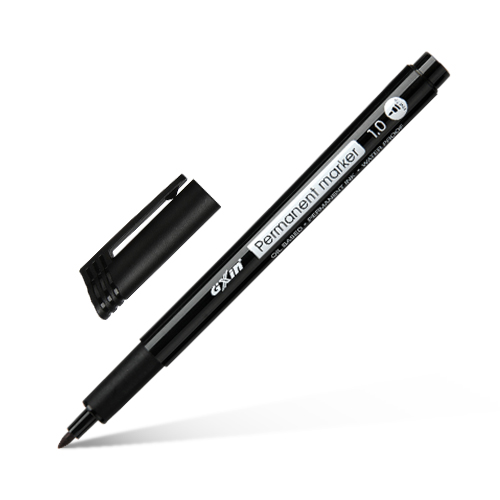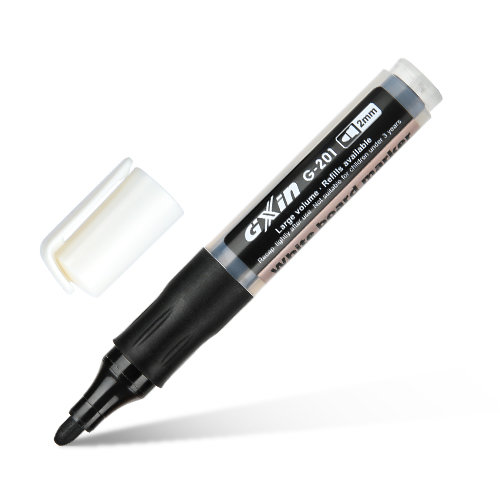
Paint markers are powerful tools used in both industrial and creative environments. But not all paint markers are created equal—especially when it comes to the type of ink they use. The ink formula determines how the marker performs on different surfaces, how long it lasts, how safe it is to use, and how it behaves in various environmental conditions.
In this article, we’ll break down the key differences between oil-based, water-based, and acrylic paint marker inks to help you better understand which one fits your needs.
Oil-Based Paint Marker Ink
Oil-based inks are permanent, durable, and highly water- and abrasion-resistant, making them ideal for industrial and outdoor applications.
Key Characteristics:
- Surface Compatibility: Excellent adhesion to metal, glass, plastic, stone, wood, and rubber.
- Weather Resistance: Resistant to water, UV light, and chemicals.
- Opacity: Delivers bold, high-opacity marks on both light and dark surfaces.
- Odor: Often stronger in smell; use in well-ventilated areas is recommended.
- Drying Time: Slower than water-based ink but more durable once cured.
Best For:
Industrial labeling, automotive parts, metal fabrication, outdoor signage, and rough surfaces.
Water-Based Paint Marker Ink
Water-based paint markers use pigment suspended in a water solution, offering a low-odor, environmentally friendly alternative to oil-based products.
Key Characteristics:
- Surface Compatibility: Adheres well to paper, cardboard, wood, fabric, and some plastics.
- Safety: Generally non-toxic and low-VOC; suitable for indoor and classroom use.
- Clean-Up: Easier to clean from skin and most surfaces before drying.
- Opacity: May require multiple layers for strong color on dark backgrounds.
- Drying Time: Fast-drying on porous surfaces; longer on smooth ones.
Best For:
Creative projects, educational use, temporary marking, and indoor environments with limited ventilation.
Acrylic ink combines the best of both worlds—the vibrancy of water-based pigment and the durability of oil-based finishes. It is water-based when wet but dries to a waterproof, flexible acrylic film.
Key Characteristics:
- Surface Compatibility: Bonds well with canvas, glass, wood, plastic, metal, fabric, and more.
- Finish: Dries with a matte or satin finish; often used in fine art.
- Color Performance: Vibrant, fade-resistant, and available in metallics and fluorescents.
- Drying Time: Moderate; forms a flexible and permanent layer after curing.
- Odor: Minimal, with good environmental performance.
Best For:
Art and craft, mural work, mixed media projects, DIY decoration, and custom surface design.
Comparison Table
| Feature | Oil-Based Ink | Water-Based Ink | Acrylic Ink |
|---|
| Adhesion | Excellent on most surfaces | Best on porous surfaces | Very good on most surfaces |
| Durability | High (waterproof, UV-resistant) | Moderate | High (after drying) |
| Odor | Stronger | Low | Low |
| Drying Time | Slow to medium | Fast | Medium |
| Finish | Glossy or opaque | Matte or translucent | Matte or satin |
| Clean-Up | Solvent-based | Water cleanup | Water cleanup (before drying) |
| Use Case | Industrial, outdoor | Classroom, indoor, DIY | Artistic, creative, flexible |
Which Paint Marker Ink Should You Choose?
PYour ideal ink choice depends on how and where you plan to use the marker:
If you want vibrant, versatile ink for creative expression, especially on canvas or mixed surfaces, acrylic is a perfect choice.
If you need long-lasting, waterproof marks on hard surfaces like steel or glass: Oil-based is your best bet.
If you’re working on educational projects or need minimal odor indoors, go for water-based.
Conclusion
Understanding the difference between oil-based, water-based, and acrylic paint marker inks is crucial for choosing the right tool. Each ink type offers unique advantages, and selecting the proper one ensures better performance, longer life, and a more satisfying result.
Whether you’re a professional in manufacturing or a hobbyist in the art world, knowing your ink can help you paint smarter.





